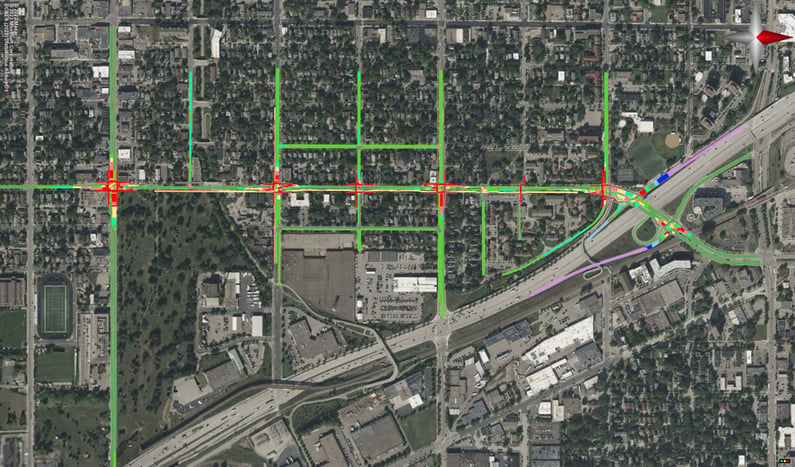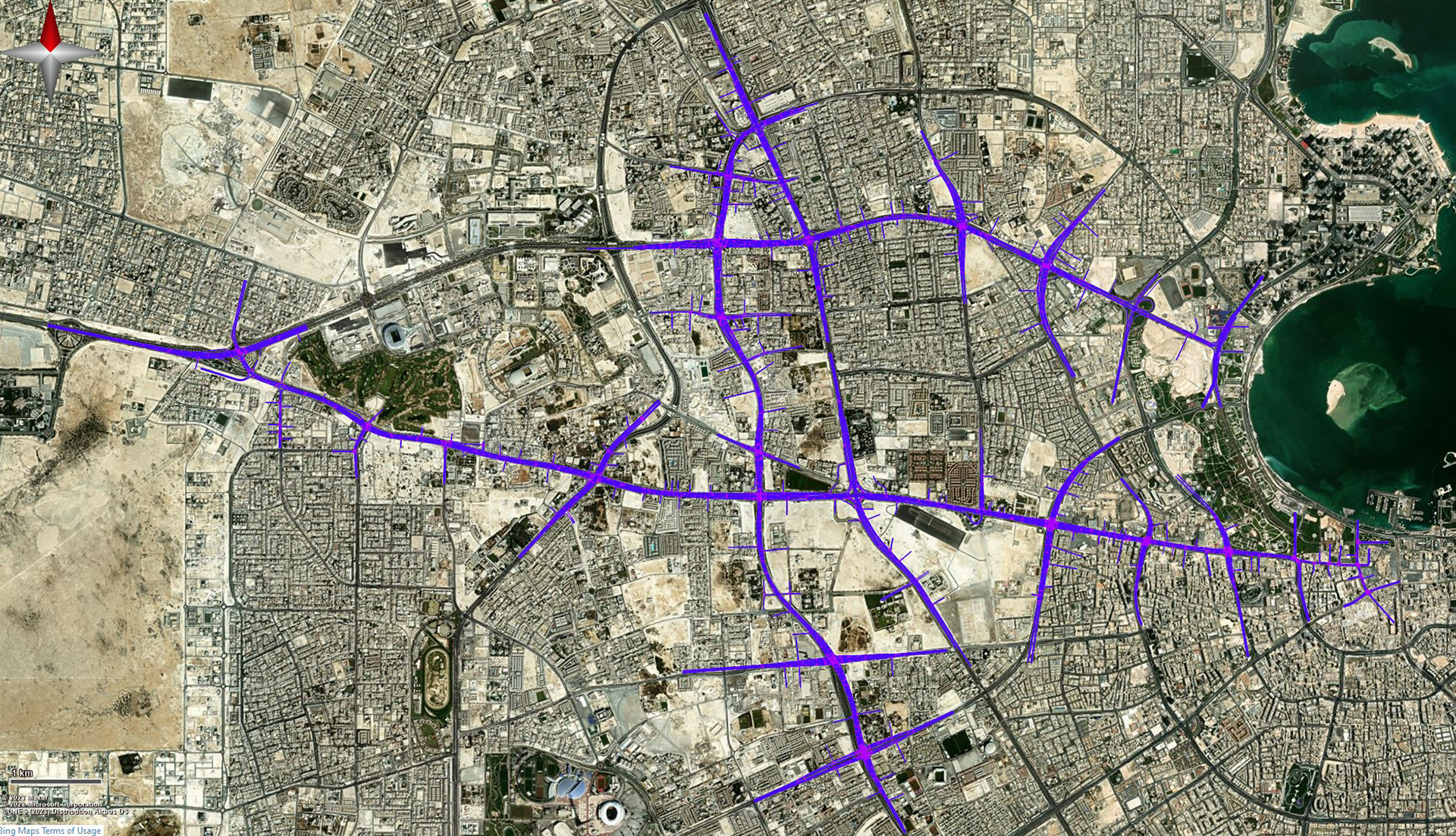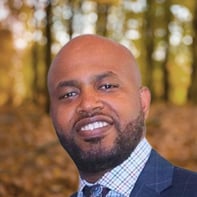Revolutionizing the way we navigate our cities – all in a day's work for traffic engineer Bine Terefe. In this Q&A, we explore his 20-year professional journey, uncovering Bine’s unique insights and vision for the industry.
In a world where urban mobility is rapidly evolving, traffic engineers like Bine play a pivotal role in transforming the future of city transportation. By staying at the forefront of industry trends, he contributes to projects that enhance the efficiency, safety, and sustainability of urban transportation.
Q&A
Can you tell us about your role at SEH and the projects you support?
As a senior traffic engineer, I lead the traffic modeling, analysis, and microsimulation efforts. My work involves a variety of projects, ranging from urban and freeway corridor analyses and optimization to multimodal planning and design, signal optimization, and safety studies. Providing software training, technical support, and quality assurance/quality control (QA/QC) reviews to junior engineers and planners is another key part of the position.
Can you discuss any upcoming trends or technologies in traffic modeling that intrigue you?
One of the trends that I find exciting is the integration of traffic modeling with other disciplines, such as land use planning, environmental analysis, and social equity. This allows us to create more holistic and comprehensive solutions that address multiple aspects of urban mobility.
I am also interested in the use of big data and artificial intelligence to enhance traffic modeling capabilities and accuracy. For example, we can use data from various sources, such as mobile devices, GPS, and sensors, to calibrate and validate our models and monitor and predict traffic patterns and behavior.
How do you stay updated with the latest developments in your field?
I read journals, attend training refreshers, webinars, and conferences, and participate in professional associations. I also network with other traffic engineers and modelers within and outside of SEH to exchange ideas and experiences. It’s important to keep learning and improving as a traffic engineer, especially in a dynamic and evolving field like modeling and simulation where there is always something new and exciting to discover!
What tools and standards do you utilize in your work?
Depending on the project needs and objectives, we use:
- Various industry-standard travel demand modeling (PTV Visum, Cube)
- Operational analysis (Synchro, Sidra, HCS+)
- Safety operations (FHWA safety analysis suites)
- Microsimulation software (PTV Vissim and SimTraffic).
We also employ big-data traffic resources such as Streetlight to inform our studies with large-scale mobility data. With GIS and CAD software, we create and analyze spatial data and maps. I follow the latest federal and state standards and guidelines from the Highway Capacity Manual, the Manual on Uniform Traffic Control Devices, and the National Cooperative Highway Research Program, among others. These tools and standards help us ensure the quality and consistency of our work and comply with the industry's best practices and regulations.
How do you approach complex traffic and modeling projects?
Proper organization and collaboration are essential for achieving success in complex projects. The first step in producing project deliverables efficiently is breaking the project down into manageable tasks and phases. Collaborating with experts across various states, disciplines, and stakeholder types ensures solutions meet all explicitly stated or implicitly expected objectives.
When project work begins, one of the most critical elements is collecting and reviewing the required data and information. This includes quantitative data and qualitative data provided by agencies and community stakeholders. Next, with the help of an excellent team, I set up the modeling and analysis framework, calibrate and validate traffic models, and perform the analysis and evaluation of different scenarios and alternatives. Throughout this process, I maintain communication and coordination with the project team and clients to ensure the project meets their expectations and requirements.
It’s also important to document the findings and present recommendations. Providing this ongoing technical support for the project's implementation and monitoring is key to successful traffic modeling.
Related: Cell Phone Data Makes Traffic Analysis and Transportation Planning Easier
Can you share an example of how your work has positively impacted a community?
One of the projects I am particularly proud of is the traffic modeling and analysis for the Cedar Avenue reconstruction project for Hennepin County in Minneapolis, Minnesota. This project involved developing a multimodal transportation design for the corridor that serves the adjacent Little Earth community and East Philips residents along with other travelers, aiming to improve mobility, safety, and livability along the corridor.

Related: A Community-Driven Study Results in Livable Streets Concept
My role was to oversee the traffic modeling and analysis of existing and future conditions. This included testing proposed improvements for transit, Bus Rapid Transit (BRT), bike and pedestrian facilities, traffic signal coordination, parking management, and street design. The comprehensive approach ensured that every aspect of the transportation network was optimized to benefit the community, making Cedar Avenue safer and more accessible for all users.
How do you incorporate sustainability considerations into your traffic models?
Performance measures and indicators are utilized to reflect the environmental and economic impacts of the transportation system. For example, I use direct and indirect measures, such as vehicle miles traveled, vehicle delay, safety factors, and accessibility scores, to assess the sustainability of different transportation alternatives and solutions. Traffic models also precisely simulate and optimize the operation and interaction of various means of mobility, including cars, buses, bikes, and pedestrians, to understand and ultimately reduce the adverse effects of traffic congestion, crashes, and pollution and to enhance the quality of life and well-being of the community.
With over 20 years in the industry, what's a key project that stands out to you?
Over the years, I've had the privilege of contributing to various fascinating and challenging projects. Each one has offered unique opportunities to shape urban and industrial landscapes in meaningful ways. Here's a glimpse into one of the most impactful projects I've worked on:
Concept Design of Urban Expressway
Khalifa Rayyan Bustan Road, Doha, Qatar

As part of the concept design team, I oversaw extensive modeling and traffic analyses as well as the development of a large-scale urban microsimulation of three urban expressway corridors (Khalifa, Rayyan and Bustan Roads) consisting of 25 grade-separated interchanges. I helped with the development of freeway and intersection concept proposals to mitigate existing and anticipated traffic issues along the corridors. As a traffic engineer, developing urban expressway concepts in a built urban context was both challenging and rewarding.
Bringing it together
There's no denying the critical role traffic engineers like Bine play in creating the transportation systems of tomorrow. His insights demonstrate the importance of innovation, sustainability, and community impact to provide holistic. If you're inspired by Bine's vision and want to learn more, reach out to connect.
About the Expert

Binebeb Terefe, PE*, PTOE**, is a senior traffic engineer and modeling specialist with extensive traffic and modeling expertise. He has a hands-on approach to delivering strategic travel demand and micro-simulation projects across the globe. With a comprehensive background in freeway and urban corridor optimization, his skills extend to travel demand modeling, traffic impact assessments, transportation master plan studies, and corridor traffic operations and analyses.
*Registered Professional Engineer in CO, TX


